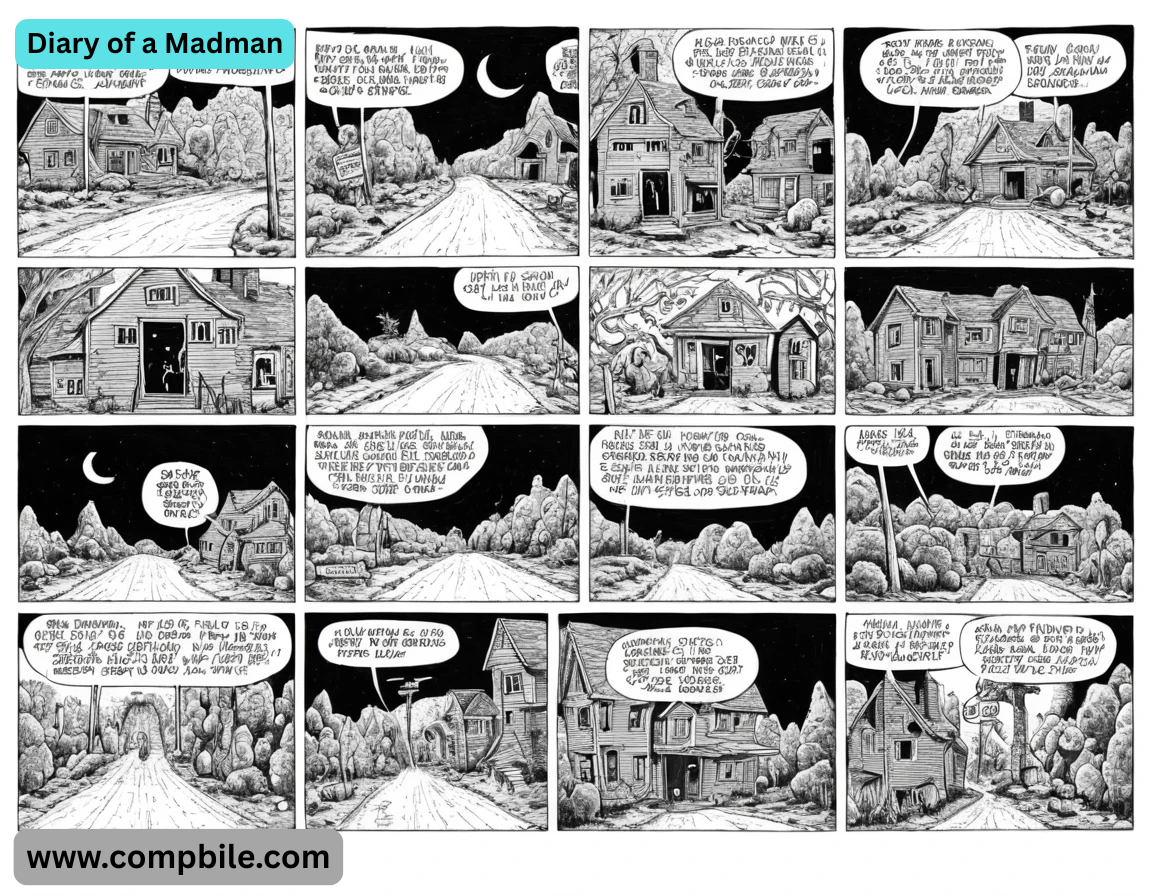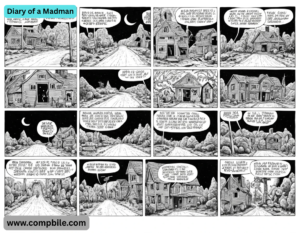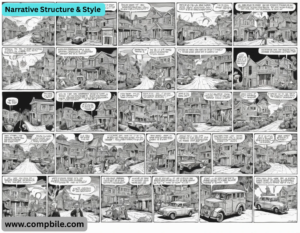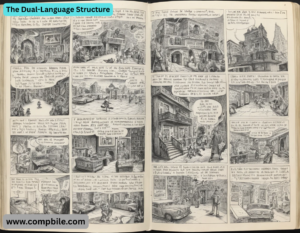Diary of a Madman “Diary of a Madman” (Diary of a Madman)is a famous short story by the renowned Chinese writer Lu Xun (Lu Xun), published in 1918. It is considered the first modern short story in Chinese literature and a foundational work of the New Culture Movement.
Summary:
- The story is presented as the fragmented diary of a man who believes he is being persecuted by a cannibalistic society. The narrator starts by noticing strange looks from people around him and gradually becomes convinced that everyone—including his family, neighbors, and even dogs—wants to eat him.
- He traces this “cannibalism” back through Chinese history, interpreting classical texts as evidence that Chinese society has always been metaphorically (and sometimes literally) consuming its own people. In the end, he makes a desperate plea:
“Save the children…”
- This cry reflects his hope that future generations might escape the oppressive traditions of the past.
Themes & Significance:
- Critique of Feudal Society – Lu Xun uses madness as a metaphor to expose the cruelty and irrationality of traditional Chinese culture, particularly Confucian norms that he saw as oppressive.
- Cannibalism as Symbolism – The “cannibalism” represents how society metaphorically devours individuals through rigid customs, oppression, and conformity.
- Modernization & Enlightenment – The story calls for a break from outdated traditions and advocates for rationality and reform.
- Unreliable Narration – The diary format and the protagonist’s madness create ambiguity: Is he truly insane, or is he the only one who sees the truth?
Narrative Structure & Style
- Diary Format: The story is framed as a discovered manuscript,
- with a preface written in classical Chinese
- (the language of tradition)
- and the madman’s diary in vernacular Chinese
- (the language of reform).
- Fragmented Entries:
- The madman’s thoughts are disjointed,
- jumping between paranoia,
- historical analysis, and moments of clarity.
- This mimics real psychological instability while symbolizing the breakdown of traditional logic.
- Unreliable Narrator: The reader must decide whether the madman is:
- A prophet exposing societal horrors, or
- Truly delusional, seeing threats where none exist.
- Lu Xun leaves this ambiguous, forcing readers to confront their own views on society.
Symbolism & Metaphors
A. Cannibalism(Eating people)
- Literal Interpretation: The madman believes people want to eat him (e.g., villagers, his brother).
Metaphorical Meaning: Represents:
- Feudal oppression: The “consumption” of the weak by oppressive traditions.
- Complicity: Even victims (like the madman’s sister) may have been “eaten” by the system.
- Historical cycles: The madman finds references to cannibalism in Confucian texts, suggesting it’s ingrained in culture.
B. Animals
- Wolf (mentioned in the preface): Symbolizes the predatory nature of society.
- Dog: The madman fears a dog’s gaze, reflecting his paranoia about being watched/judged.
C. Darkness & Light
- The madman’s fear of nighttime mirrors his dread of hidden societal evils.
Historical & Cultural Context
- May Fourth Movement (1919): Lu Xun wrote this during a period of anti-traditionalist fervor. Intellectuals blamed Confucianism for China’s stagnation.
- Confucian Critique: The madman reads “virtuous” texts (e.g., The Classic of Filial Piety) as proof of cannibalism, attacking Confucian hierarchies that demanded obedience at the cost of individuality.
- Western Influence: Lu Xun borrowed the “madman” trope from Gogol’s Diary of a Madman (1835), but adapted it to critique Chinese society.
Philosophical Themes
A. Madness vs. Enlightenment
- Is the madman the only sane person in an insane world? (Echoes of Nietzsche: “In a mad world, only the mad are sane.”)
- His delusions force readers to question: What if the real madness is blindly accepting oppressive norms?
B. Collective Guilt
- The line “Perhaps there are still children who haven’t eaten men?” implicates everyone in perpetuating harmful traditions.
C. Hope & Despair
- The ending is ambiguous: Is the plea to “save the children” a hopeful call for change, or does it acknowledge that the cycle will continue?
5. Literary Influences & Legacy
- Gogol’s Influence: Lu Xun admired Gogol’s use of a madman’s perspective to critique society.
- Modern Chinese Literature: This story broke from classical forms, using vernacular language and psychological depth.
- Global Resonance: Comparable to Kafka’s The Trial (absurd oppression) or Dostoevsky’s Notes from Underground (unreliable narration).
Key Passages & Analysis
Opening Lines:
- “The moon is bright tonight.”
- The madman interprets the moonlight as a sign he’s being watched—
- showing how his mind twists reality.
Cannibalism in History:
- “I remember when my brother taught me to write, no matter what the subject, we always ended up discussing morality…
- Now I see, between every line was written ‘Eat people.’”
- Confucian texts,
- often seen as moral guides,
- are reinterpreted as manuals of oppression.
Final Cry:
- “Save the children…”
- A desperate hope that future generations might escape this cycle, but also a recognition that the madness may never end.
The Dual-Language Structure
- Preface (Classical Chinese Classical Chinese):
- Written in the refined, elitist language of scholars, framing the madman’s diary as a curiosity.
- The “sane” narrator dismisses the madman’s writings as incoherent, reinforcing the establishment’s rejection of radical critique.
- Raw, fragmented, and emotional—the language of the New Culture Movement.
- By giving the madman this voice, Lu Xun symbolically dethrones classical Chinese as the sole medium of truth.
2. The Madman’s Evolving Language
- Diary of a Madman Early entries: Fearful, disjointed (“They are all eating men!”).
- Later entries: Pseudo-scholarly, quoting Confucian texts to “prove” cannibalism.
- Final line: A cry in childlike simplicity (“Save the children…”).
- His regression mirrors China’s struggle to break free from tradition.
II. Intertextuality: Confucianism as a Horror Story
The madman “reads between the lines” of Confucian classics, exposing their hidden violence:
Classic Text Madman’s Interpretation Lu Xun’s Critique
The Classic of Filial Piety “Filial piety” = Justifying elder domination Confucian morality disguises oppression
Analects of Confuciu s “Benevolence” = A tool to justify cruelty Hypocrisy of Confucian virtue
This technique reverses traditional exegesis: Instead of learning morality from the classics, the madman exposes their barbarism.
III. Psychological Horror: Paranoia or Enlightenment?
1. The Madman’s Delusions as Social Commentary
Persecution Complex:
- “Even the dog in Zhao’s house looked at me twice!” → Society’s judgment is inescapable.
Hyper-awareness of History:
- He sees cannibalism in every dynasty, suggesting oppression is cyclical.
Self-Implication:
- “I must have eaten my sister’s flesh too!” → No one is innocent.
2. Is He Truly Mad?
The “Sane” World:
- The villagers dismiss him, but their behavior (gossip, conformity) is equally irrational.
Kafkaesque Twist:
- Like Josef K. in The Trial,
- the madman is condemned by an invisible system.
IV. Philosophical Paradoxes
1. The Cannibal’s Dilemma
- If everyone eats and is eaten,
- is resistance futile?
- The madman’s brother: A kind man who still upholds tradition → Even “good” people perpetuate the system.
2. The Final Plea: Hope or Despair?
- Optimistic Reading: Children = A new generation free from tradition.
- Pessimistic Reading: The plea is unheard—
- the diary is framed as a relic,
- ignored by the “sane.”
Get article on pdf file….Click now
……….. ……….




